#Omnichannel Customer
Text
Omnichannel Loyalty Strategies: Streamline the Customer Experience
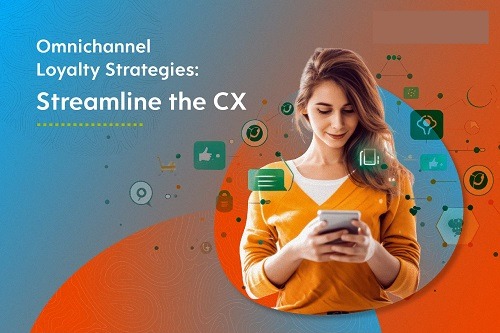
In today’s competitive market, businesses must go beyond traditional methods to retain and engage customers. Omnichannel loyalty strategies have emerged as a critical approach to ensuring a seamless and cohesive customer experience. By leveraging various channels and integrating customer interactions, companies can foster stronger loyalty and improve overall satisfaction. This blog explores optimized omnichannel customer loyalty strategies, seamless engagement across platforms, enhanced interactions, valuable customer insights, and personalized experiences.
Optimized Omnichannel Customer Loyalty Strategies
Optimized omnichannel customer loyalty strategies are essential for businesses aiming to create a unified customer journey. These strategies involve integrating multiple touchpoints such as in-store, online, and mobile experiences. By doing so, companies can offer consistent rewards, personalized offers, and tailored experiences regardless of the channel. Effective omnichannel loyalty programs should be easy to use, accessible, and rewarding, encouraging repeat business and customer retention.
Seamless Omnichannel Customer Engagement
Seamless engagement across all customer touchpoints is crucial for a successful omnichannel strategy. Customers should be able to transition effortlessly between different channels without losing the continuity of their experience. For instance, a customer might start shopping online, receive personalized recommendations via email, and then complete their purchase in-store using a mobile loyalty app. Ensuring that customer data is synchronized and interactions are cohesive across channels helps in maintaining a smooth and engaging customer journey.
Enhanced Interaction Across Platforms
Omnichannel strategies enhance customer interaction by providing consistent and relevant communication across all platforms. This includes social media, email, websites, and physical stores. By leveraging data from various sources, businesses can create more targeted and meaningful interactions. For example, personalized marketing messages can be tailored based on a customer’s browsing history, purchase behavior, and preferences. This level of personalization fosters a deeper connection and encourages loyalty.
Gain Valuable Customer Behavior Insights
One of the significant benefits of omnichannel strategies is the ability to gain valuable insights into customer behavior. By tracking interactions across different channels, businesses can collect comprehensive data that reveals patterns and preferences. These insights can be used to refine marketing strategies, improve products and services, and tailor loyalty programs to better meet customer needs. Understanding customer behavior helps in making informed decisions that enhance the overall customer experience.
Enhanced Personalization with Omnichannel Strategies
Personalization is a key component of effective omnichannel strategies. By utilizing data from various touchpoints, businesses can create highly personalized experiences that resonate with customers. This can include personalized product recommendations, tailored promotions, and customized communication. Enhanced personalization not only improves customer satisfaction but also increases the likelihood of repeat purchases and long-term loyalty. Implementing omnichannel strategies allows businesses to deliver a more relevant and engaging experience for each customer.
Conclusion
Implementing omnichannel loyalty strategies is essential for businesses looking to streamline the customer experience and foster long-term loyalty. By optimizing customer engagement, enhancing interactions across platforms, gaining valuable insights, and personalizing experiences, companies can create a seamless and cohesive journey for their customers. Omnichannel strategy consulting can help businesses navigate the complexities of integrating multiple channels and ensuring a consistent and rewarding customer experience. Embracing these strategies will not only improve customer satisfaction but also drive business growth and success in today’s competitive market.
0 notes
Text

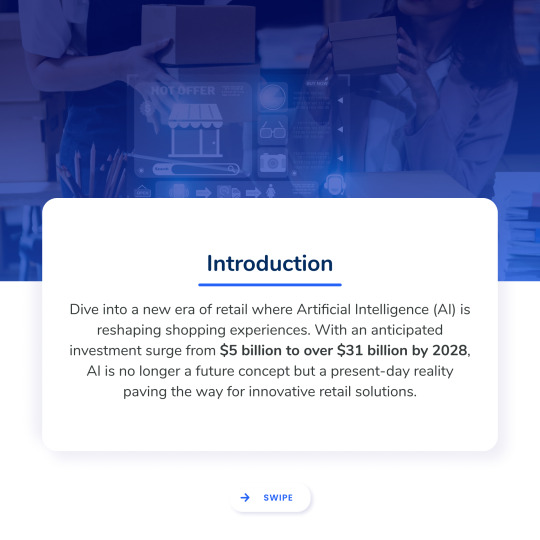
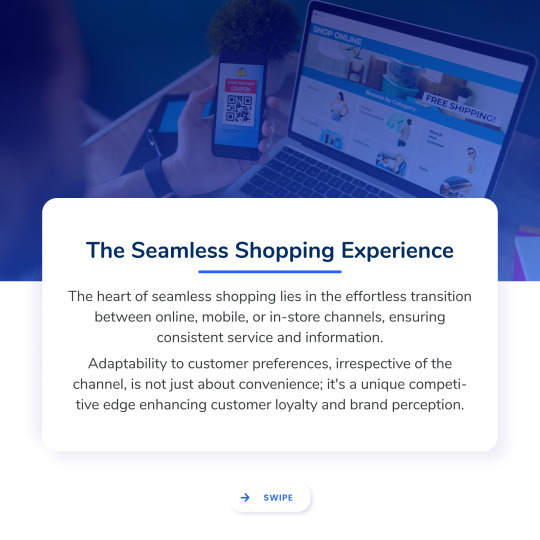



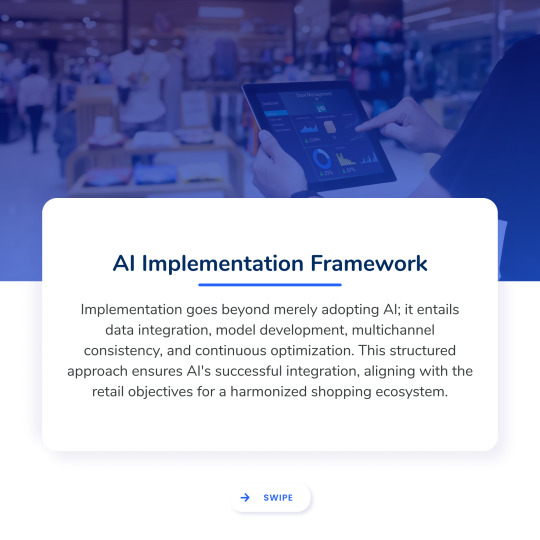


Discover a new era of shopping where every step feels like it’s tailored just for you. 🛍️ Dive deeper into a world where shopping meets simplicity and personalization effortlessly.
Watch our latest webinar to unlock the magic behind creating smooth and uniquely tailored shopping journeys. For a richer understanding and a peek into this revolution, hit play on our webinar. To learn more, click the link below! 🎥
#retail#artificial intelligence#ai#customer experience#cx#shopping#omnichannel#customerengagement#retail technology#webinar#getondata
3 notes
·
View notes
Text
How to Choose the Right Martech Tools for Your B2B Business?
In today’s fast-evolving B2B landscape, setting up an effective Martech stack is essential to driving growth and staying competitive. The right combination of marketing technology tools not only streamlines marketing efforts but also aligns them with sales processes, ultimately enhancing your Go-to-Market Strategy. For B2B businesses aiming to succeed, creating an integrated stack tailored to your sales and marketing needs is key. Let’s explore the steps and best practices for setting up a Martech stack that leads to omnichannel marketing success.
What is a Martech Stack, and Why Does It Matter for B2B?
A Martech stack refers to the collection of software tools used by businesses to enhance and automate their marketing technology efforts. In a B2B context, this involves a strategic mix of solutions designed to streamline activities such as lead generation, customer management, content creation, data analytics, and more.
For B2B companies, a Martech stack helps synchronize marketing and sales efforts, making it easier to track customer interactions, nurture leads, and ultimately close deals. A well-built stack serves as the foundation of your Go-to-Market Strategy, allowing for better targeting and personalization across multiple channels. In today’s competitive environment, relying solely on manual processes can limit growth. A sophisticated Martech infrastructure is essential for scaling and optimizing B2B marketing activities.
Get full insights@ https://itechseries.com/blog/how-to-set-up-your-martech-stack-for-b2b-marketing-success/
What Are the Essential Components of a B2B Martech Stack?
To set up an effective Martech stack, focus on assembling the right mix of tools that fit your unique business goals. Here are the essential components:
1. Customer Relationship Management (CRM) Systems
At the heart of any Martech stack is a CRM system. This tool helps track customer interactions, store valuable data, and align marketing and sales efforts. A strong CRM integration ensures that both teams can access up-to-date information about leads, accounts, and sales pipelines.
2. Marketing Automation Platforms
Automation platforms enable businesses to streamline marketing tasks such as email campaigns, lead nurturing, and social media scheduling. Automating repetitive tasks improves efficiency and ensures consistency in delivering targeted messages. This automation also fuels a successful Go-to-Market Strategy by enhancing campaign execution.

3. Analytics Tools
Data-driven decisions are vital for B2B success. Analytics tools help marketers measure campaign performance, track engagement, and understand customer behaviors. By gathering insights into which campaigns resonate best, you can refine your omnichannel marketing approach and optimize future strategies.
4. Content Management Systems (CMS)
A CMS enables B2B marketers to manage digital content efficiently. It facilitates the creation, publication, and updating of website content, blog posts, and landing pages. CMS platforms often integrate with other Martech tools, ensuring seamless workflows for content creation and distribution.
5. Lead Generation and Scoring Tools
Effective sales and marketing teams need to identify high-value leads. Lead generation tools help capture, score, and manage leads based on their likelihood to convert. This data-driven approach increases efficiency and ensures that sales teams focus on leads with the highest potential for closing.
How Can You Align Your Martech Stack with Your Go-to-Market Strategy?
Aligning your Martech stack with your Go-to-Market Strategy is crucial for achieving sustainable growth. To align your tools with business objectives, consider the following steps:
Define Clear Objectives: Before choosing tools, outline your marketing goals. Whether you're focusing on lead generation, nurturing, or customer retention, ensure that each component of your Martech stack aligns with your strategy. The more aligned your tools are, the better you can execute campaigns that drive results.
Prioritize Seamless Integration: An effective Martech stack relies on smooth integration between different tools. Your CRM, marketing automation platform, and analytics tools should work together to provide a holistic view of customer interactions. When your systems are integrated, your sales and marketing teams can work more collaboratively and efficiently.
Utilize Data for Personalization: Leverage the data your Martech stack collects to create personalized marketing experiences. Customer insights, engagement data, and previous interactions can help tailor content and outreach strategies, leading to more effective omnichannel marketing.
Track and Optimize Performance: Regularly review the performance of your Martech stack to ensure it’s contributing to your overall Go-to-Market Strategy. Use data analytics tools to measure the effectiveness of campaigns and identify areas for improvement.
Get the technology trends and insights on GTM Library@ https://itechseries.com/gtm-library/
What Role Does Omnichannel Marketing Play in B2B Success?
Omnichannel marketing is essential for delivering a consistent brand experience across multiple touchpoints. In B2B, this means ensuring that your message is aligned across various platforms, including email, social media, website, and in-person events. A well-integrated Martech stack enables you to execute omnichannel marketing strategies by centralizing customer data and automating campaigns across channels.
Here’s how omnichannel marketing supports your B2B success:
Improved Customer Experience: An integrated Martech stack allows businesses to deliver a cohesive experience at every stage of the customer journey. This increases engagement, boosts satisfaction, and builds stronger relationships.
Increased Efficiency: Automating processes across different channels saves time and resources, allowing marketers to focus on more strategic initiatives.
Better Data Insights: Omnichannel strategies powered by Martech tools provide deeper insights into customer behavior and preferences, allowing for data-driven decisions that improve marketing efforts.
How Can You Ensure Long-Term Martech Stack Success?
Once your Martech stack is in place, it’s essential to maintain and optimize it for long-term success. Here are some best practices:
Stay Updated: The marketing technology landscape is constantly evolving. Regularly review your tools and processes to stay ahead of trends and adapt to new challenges.
Train Your Team: Invest in training to ensure that your marketing and sales teams understand how to leverage the tools in your Martech stack effectively.
Evaluate Performance Regularly: Track your stack’s performance regularly. Use analytics tools to measure success, and make adjustments where necessary to improve efficiency and ROI.
Focus on Integration: Continuously seek ways to improve integration between systems. As your Martech stack grows, integration will remain key to ensuring all tools work seamlessly together.
Follow for more info: https://www.itechseries.com/
Conclusion
Setting up a Martech stack for B2B marketing success requires careful planning, alignment with your Go-to-Market Strategy, and an ongoing commitment to optimization. By choosing the right tools, focusing on integration, and prioritizing omnichannel marketing, businesses can create a tech-driven infrastructure that enhances both marketing and sales efforts. With the right Martech stack in place, B2B companies are well-positioned to drive growth, increase revenue, and remain competitive in an ever-changing market.
0 notes
Text
How to Personalize Customer Experiences with Omnichannel Support
In today’s competitive business landscape, customer experience is everything. With customers interacting through various channels — be it email, social media, or live chat — companies must focus on omnichannel customer support to deliver a seamless and personalized experience. Personalized customer interactions not only improve satisfaction but also increase brand loyalty.
1. Understanding the Customer Journey
To personalize experiences, start by mapping the customer journey. Identify all possible touchpoints where customers may interact with your brand. This helps in understanding where they need support and how they move between channels. For instance, some customers may initiate a query through a social media platform and continue via email or live chat. To ensure consistency, integrating social media listening tools into your omnichannel strategy allows you to track these interactions and address customer concerns swiftly.
2. Leverage Data for Personalization
A key component of personalizing customer support is data. Collecting and analyzing customer data across different channels provides valuable insights into their preferences, behaviors, and needs. Use this data to tailor responses, recommend relevant products, and offer customized support solutions. This is where a reputation management tool becomes indispensable. It tracks customer feedback across platforms, allowing businesses to address issues proactively and maintain a positive brand image.
3. Consistent Communication Across Channels
Omnichannel support ensures that communication remains consistent no matter which channel the customer uses. For example, if a customer starts a conversation on live chat, they should not have to repeat themselves when they switch to email or a phone call. Personalization in omnichannel support means making sure that customer history and context are preserved across interactions. By integrating social media listening tools, businesses can track and respond to conversations happening across platforms in real-time, offering a more connected and personalized experience.
4. AI and Automation for Personalization
While human interaction is vital, AI-powered chatbots can enhance the personalization experience by instantly addressing customer inquiries. Chatbots can be programmed to answer frequently asked questions, resolve basic issues, and collect customer information that can later be used by human agents. When designed effectively, chatbots integrated into an omnichannel customer support system can provide personalized solutions, escalating issues to human agents when necessary.
5. Use of Feedback for Continuous Improvement
To ensure your omnichannel customer support remains personalized, continually seek customer feedback. By utilizing a reputation management tool, businesses can track reviews, ratings, and feedback across multiple platforms. This enables companies to understand how their customer support strategies are perceived and make necessary adjustments. Additionally, social media listening tools can capture sentiment analysis, helping brands fine-tune their communication and support for more personalized customer interactions.
Conclusion
Personalizing customer experiences with omnichannel support is not just about addressing queries; it’s about creating a consistent, seamless, and engaging journey across all customer touchpoints. Integrating reputation management tools and social media listening tools can significantly enhance personalization, making your customer support both effective and efficient. By understanding customer needs, leveraging data, and using AI and automation, businesses can offer tailored support that meets modern consumer expectations.
0 notes
Text
Why Omnichannel Marketing is Essential for Business Growth in 2024
In today’s connected world, consumers expect a seamless experience across multiple platforms. Omnichannel marketing delivers just that—ensuring consistent messaging and interaction across channels like social media, email, websites, and more.
1. Unified Customer Experience
Omnichannel marketing focuses on creating a unified experience across all touchpoints. Whether customers interact via social media or visit your website, they get a consistent brand message, enhancing engagement and trust.
2. Customer-Centric Approach
This approach puts customers at the heart of your strategy, guiding them smoothly through the sales funnel, no matter where they engage.
3. Increased Loyalty
When customers receive consistent, personalized experiences across channels, they feel valued, building trust and fostering loyalty.
4. Data-Driven Decisions
Omnichannel marketing leverages data from multiple channels to gain insights, allowing businesses to create more personalized and effective campaigns.
To succeed in 2024, businesses need a solid omnichannel strategy. For those looking to develop these skills, Vidya Sarthi Institute of Digital Marketing offers the best digital marketing course in Faridabad, with a one-week free trial to get started.
0 notes
Text
Reimagine Retail: The Digital Transformation Revolution

Elevate your retail game with AquSag Technologies. Our experts help you harness the power of digital transformation to deliver exceptional customer experiences. From omnichannel strategies to personalized marketing and innovative AR/VR, we provide the solutions you need to thrive in today's competitive landscape.
#retail digital transformation#customer experience#omnichannel#personalization#AR/VR#e-commerce#retail technology#digital strategy.
0 notes
Text

The customer journey is increasingly complex, encompassing multiple marketing channels like paid ads, organic search, social media, referrals, and traditional print marketing. This rapid proliferation of digital channels is significantly altering customer expectations, necessitating brands to embrace an omnichannel approach to customer engagement as springboard to drive sales and revenue.
What Is Omnichannel Customer Engagement?
Employing an omnichannel marketing strategy requires you to interact with customers across various channels, such as email, SMS, WhatsApp, QR codes, social media, and paid channels, every step of the way. This approach is crucial for growing a business, whether you run an e-commerce site or a brick-and-mortar store. It allows customers to choose when, where, and how they make a purchase.
Click to Read More: https://www.go.resul.io/blog/10-key-advantages-of-omnichannel-customer-engagement
#marketing#omnichannel#whatsapp marketing#email marketing#marketing campaigns#qr code#customer data platform
0 notes
Text
How to Build a Seamless Customer Journey with the Right Technology
Creating a seamless customer journey is essential for businesses looking to build strong, lasting relationships with their customers. The right technology can significantly enhance this journey by ensuring that every interaction is smooth, consistent, and personalized. Omnichannel communication platforms are crucial in this process, as they allow businesses to maintain consistent communication across various channels, such as email, social media, chatbots, and phone calls. This ensures that customers experience the same level of service, regardless of how they choose to engage with the brand.
Social selling software further enhances the customer journey by enabling sales teams to connect with customers on their preferred social media platforms, like LinkedIn, Facebook, and Twitter. This approach helps build more personalized and meaningful relationships, making customers feel valued throughout their journey.
Customer experience automation is another key component, simplifying and streamlining routine tasks such as onboarding, follow-ups, and support. Automated systems ensure that customers receive timely and relevant communications, such as personalized product recommendations or reminders, improving their overall experience.
By integrating omnichannel communication platforms, social selling software, and customer experience automation, businesses can create a seamless, efficient, and personalized customer journey that drives loyalty and long-term success. To know more, Read this blog.
0 notes
Text

Conversational Commerce and the Future of Customer Interactions
Customer interactions are also changing drastically, particularly due to the implementation of conversational commerce. Thus, the adoption of conversational commerce as a business model or as a tool is not only the trend of the B2B sector but rather a necessity. With the help of chatbots, artificial intelligence (AI), and natural language processing (NLP), organizations are able to transform customer interaction and improve the level of service and efficiency of sales. In this article, we understand how B2B organizations can leverage conversational commerce as a tool to cope with competitive forces.
Also read- top three B2B contact database providers
#AI-powered chatbots#Artificial intelligence#B2B companies#B2B customer interactions#B2B organizations#B2B sector#Conversational Commerce#conversational commerce tools#customer behavior#customer engagement#data analytics#marketing communication#natural language processing#omnichannel experience#Omnichannel Marketing#b2b marketing#abm strategy#business analytics#account based marketing#lead generation
0 notes
Text
Mastering Omnichannel Engagement through Integrated Product and Content Management

In today's hyper-connected digital landscape, businesses are constantly challenged to deliver seamless experiences across multiple channels. This is where Omnichannel Consulting plays a pivotal role in integrating product and content management strategies. By leveraging an integrated approach, businesses can effectively manage their product information and content assets to enhance customer engagement and drive conversions.
Integrated Product and Content Management
Integrated product and content management involves the seamless synchronization of product data and content across various channels such as websites, mobile apps, social media platforms, and offline stores. This integration ensures consistency in messaging, pricing, and promotions, providing customers with a unified experience regardless of the channel they choose.
Content Management
Content management focuses on creating, editing, and distributing content to engage and inform customers. It includes strategies for content creation, curation, and personalization to tailor messages according to customer preferences. A robust content management system (CMS) enables businesses to publish relevant content in real-time, keeping customers engaged throughout their journey.
Product Information Management
Product Information Management (PIM) centralizes and manages product data to ensure accuracy and consistency across all channels. It includes attributes such as descriptions, images, pricing, and specifications, empowering businesses to showcase their products effectively. A PIM system streamlines product updates and enriches the customer experience by providing comprehensive product information.
Digital Asset Management
Digital Asset Management (DAM) focuses on organizing and storing digital assets such as images, videos, and documents. It enables businesses to easily access and distribute media assets across channels, enhancing visual storytelling and brand consistency. DAM systems facilitate efficient asset search, metadata tagging, and version control, ensuring that the right assets are used at the right time.
Enhancing the Experience with this Trinity System for Business Users
The integration of Product Information Management, Content Management, and Digital Asset Management forms a powerful Trinity System for business users. This system empowers users to:
1.Streamline Operations: By centralizing product data and content assets, businesses can streamline their operations and reduce time-to-market for new products and campaigns.
2. Improve Collaboration: Collaborative workflows within the Trinity System facilitate cross-functional collaboration between marketing, sales, and product teams, leading to cohesive strategies and messaging.
3. Personalize Experiences: Leveraging data insights from PIM and CMS, businesses can personalize customer experiences with targeted content and product recommendations, increasing customer satisfaction and loyalty.
4. Optimize Performance: Continuous monitoring and optimization of content and product performance enable businesses to identify trends, optimize strategies, and drive revenue growth.
In Conclusion,
Mastering Omnichannel Engagement through Integrated Product and Content Management is essential for businesses seeking to thrive in today's competitive market. By implementing a Trinity System comprising PIM, CMS, and DAM, businesses can deliver consistent, personalized experiences that resonate with customers across all touchpoints.
0 notes
Text

Join us at this premier event with 30+ top CXOs and 150+ CX visionaries.
Explore partnership opportunities that will redefine the future of your business.
𝐖𝐡𝐲 𝐂𝐡𝐨𝐨𝐬𝐞 𝐔𝐬?
✔Amplify Your Brand: Position your brand at the forefront of customer experience innovation.
✔Network with Leaders: Connect with industry pioneers and CX thought leaders.
✔Showcase Innovations: Highlight your cutting-edge customer experience solutions and technologies.
✔Access New Opportunities: Explore emerging trends and potential collaborations in the CX landscape.
13th September in Delhi
20th September in Mumbai
25th September in Bengaluru
Secure your place now and lead the change
#CX Latest Trends#Customer Engagement#Seamless Omnichannel Experiences#Social Media Customer Enagagement
0 notes
Text
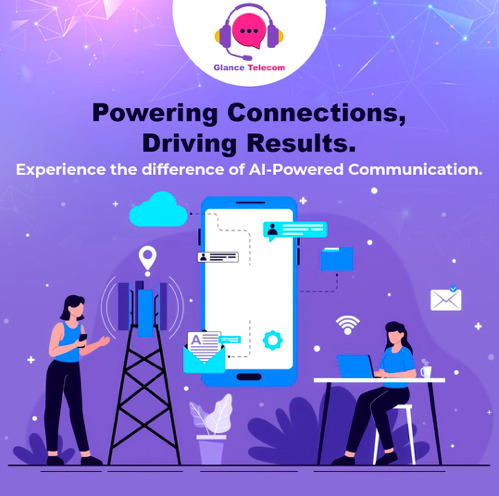
We don't just offer traditional communication solutions. We're at the forefront of innovation, leveraging the power of AI to take your interactions to the next level. Experience the difference with Crystal-clear VoIP calls, Effortless SMS solutions and AI-powered features. https://bit.ly/4cG4F2U #GlanceTelecom #AI #Communication #Results #VoIP #SMS #BusinessSuccess #CloudSolutions #CustomerSuccess Glance Telecom
#AI-powered communication solutions#VoIP solutions#Call center solutions#SMS solutions#Global communication#Customer service#Cutting-edge technology#Reliable communication#Cost-effective solutions#Customer satisfaction#Business growth#Building relationships#AI-powered call center software#Best VoIP providers for businesses#How to improve customer service with SMS#Global communication solutions for enterprises#Increase customer loyalty through communication#VoIP phone systems#VoIP for business#Omnichannel contact center solution#Automated call distribution#Bulk SMS marketing#Interactive voice response (IVR) system#Call center compliance#VoIP call center#Global reach#Real-time analytics
1 note
·
View note
Text
Delivering exceptional customer service holds immense importance in today’s competitive terrain. This is where Contact Center Solutions become crucial.
#ContactCenter#HostedService#Omnichannel#CustomerExperience#BusinessGrowth#Integration#Reliability#Security#Customization#Analytics#UserFriendly#CustomerSupport#CostEfficiency
0 notes
Text
How Omnichannel Customer Service Improves Brand Loyalty
In today’s fast-paced digital world, customer expectations are higher than ever. They demand seamless, personalized, and consistent experiences across multiple channels. Meeting these expectations is crucial for businesses looking to build and maintain brand loyalty. One of the most effective ways to achieve this is through omnichannel customer service.
What is Omnichannel Customer Service?
Omnichannel customer service is the practice of providing a unified customer experience across all communication channels, including phone, email, chat, social media, and in-store interactions. The key to successful omnichannel service is ensuring that these channels are interconnected, allowing customers to switch between them without any disruption in the service they receive.
The Role of Omnichannel Customer Service in Building Brand Loyalty
1. Consistency Across Channels
One of the main reasons omnichannel customer service improves brand loyalty is the consistency it offers. When customers receive the same high-quality service across all channels, they feel valued and understood, which strengthens their trust in the brand. Whether they are using a social media management tool to reach out or submitting a query through an email ticketing system, the experience should be seamless and coherent.
2. Personalized Customer Experiences
Omnichannel customer service allows businesses to collect and analyze data from various touchpoints, enabling them to provide personalized experiences. When customers feel that a brand understands their needs and preferences, they are more likely to remain loyal. For example, if a customer interacts with your brand on social media and later calls your support team, an omnichannel approach ensures that the support team has access to the previous interaction data, allowing them to offer personalized assistance.
3. Enhanced Customer Convenience
Convenience is a significant factor in customer satisfaction and loyalty. Omnichannel customer service allows customers to choose their preferred communication channel and switch between them as needed. For instance, a customer might start a conversation via a social media management tool and later continue it through an email ticketing system without having to repeat themselves. This flexibility makes it easier for customers to engage with your brand, increasing their overall satisfaction.
4. Improved Response Times
Fast response times are critical in maintaining customer satisfaction and loyalty. Omnichannel customer service enables businesses to respond to inquiries more efficiently by integrating various channels. For example, an email ticketing system can be linked to your social media management tool, ensuring that all customer queries are handled promptly, regardless of the channel they originate from. This level of responsiveness can significantly enhance the customer experience and, in turn, foster brand loyalty.
5. Building Trust Through Transparency
An omnichannel approach also promotes transparency, which is vital for building trust. Customers appreciate when brands are open and honest about their processes, and omnichannel customer service can facilitate this by providing consistent messaging across all platforms. When customers trust a brand, they are more likely to stay loyal and recommend the brand to others.
The Impact of Omnichannel Customer Service on Customer Retention
Customer retention is closely linked to brand loyalty, and omnichannel customer service plays a crucial role in retaining customers. By offering a seamless, consistent, and personalized experience across all channels, businesses can keep customers engaged and satisfied. This, in turn, reduces churn rates and increases the likelihood of repeat business.
Conclusion
Omnichannel customer service is no longer a luxury but a necessity for businesses aiming to build and maintain brand loyalty. By providing consistent, personalized, and convenient experiences across all channels, businesses can significantly enhance customer satisfaction and retention. Integrating tools like an email ticketing system and a social media management tool into your omnichannel strategy can further streamline operations and improve the overall customer experience.
In the competitive business landscape, brands that prioritize omnichannel customer service are better positioned to foster long-term loyalty and achieve sustained success.
0 notes
Text
Multichannel Marketing For Customer Retention
Multichannel marketing is a powerful tool for boosting customer retention. By engaging customers across various platforms, you can increase loyalty, drive repeat business, and reduce churn. Continue reading to explore proven strategies and expert insights that will help you retain more customers and grow your business.
Importance of Customer RetentionMultichannel Marketing for Customer…
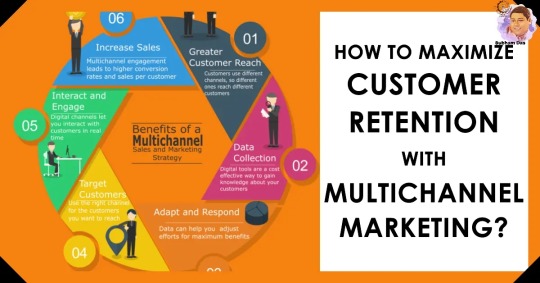
View On WordPress
#customer experience#customer relationship#omnichannel marketing#multichannel marketing#customer retention#marketing strategy#customer loyalty#customer engagement#retention strategies#marketing tactics#cross-channel marketing#digital marketing#brand loyalty#integrated marketing#customer satisfaction#multichannel approach#marketing automation#CRM#marketing channels#customer journey#email marketing#social media marketing#customer lifecycle#data-driven marketing#personalized marketing#customer insights#loyalty programs#marketing campaigns#customer feedback#marketing trends
1 note
·
View note
Text
Enhance customer interactions with omnichannel for Dynamics 365 Customer Service by Intelegain. Streamline support, improve satisfaction, and unify communication across all channels with our expert solutions.
0 notes